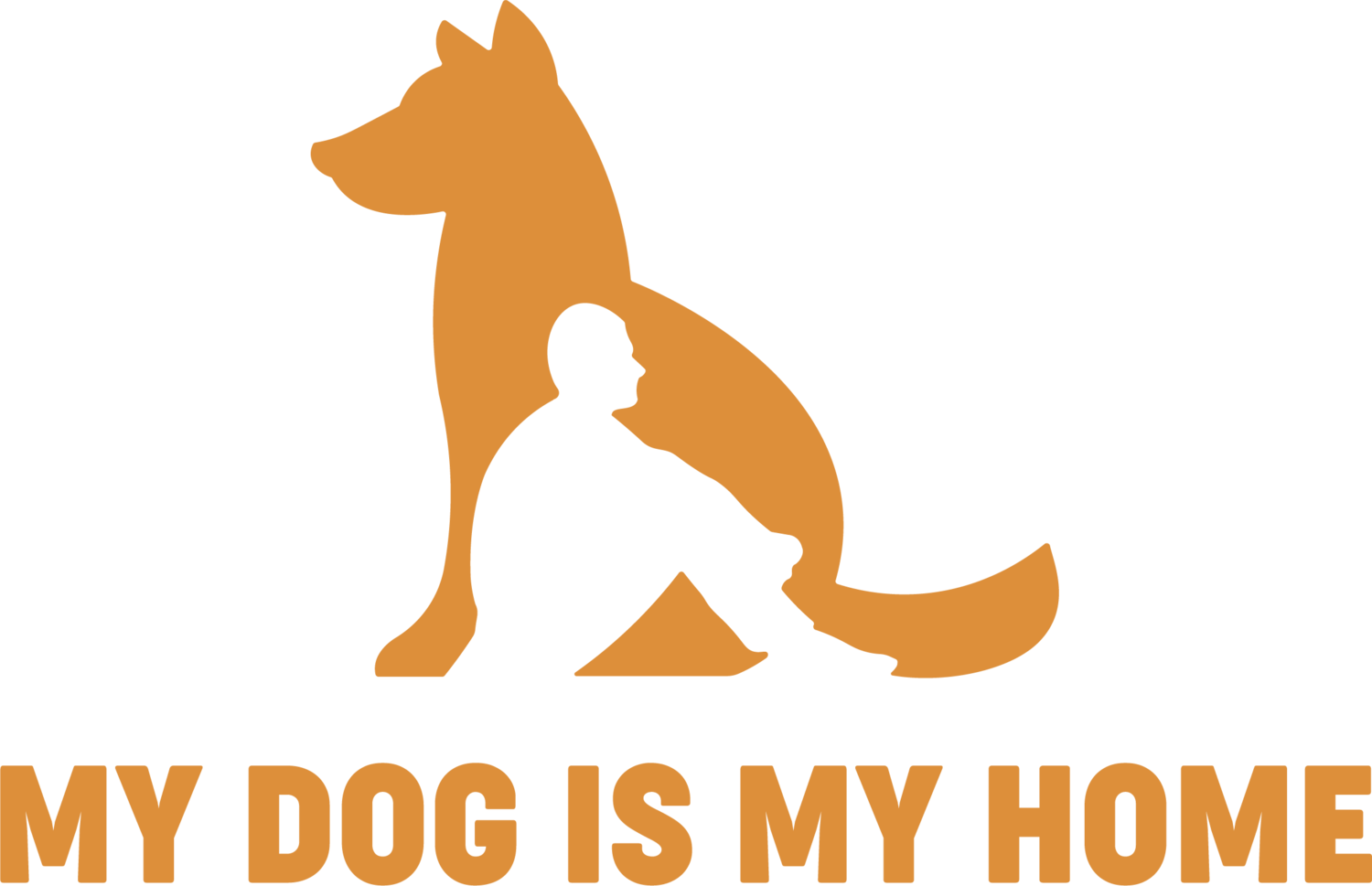Breaking Ground is known for doing things differently. Most often, they are lauded for being New York City's largest provider of supportive housing* and a pioneer of "Housing First" - a model based on the premise that to end homelessness, we must first and foremost provide homes. But a little known fact about Breaking Ground is that they also have a very different model for allowing animals in their facilities. Since the very outset of their supportive housing operations, Breaking Ground has allowed pets on premises - a number of their buildings are pet-friendly.
At the time of their founding, allowing pets was simply a way for Breaking Ground to grandfather in the lifestyles of those who were already living in their Times Square apartment complex, a former grand hotel that the organization acquired and renovated in 1990. Over the years, this original “pets welcome” policy at the Times Square residence has evolved. Although it was never Breaking Ground’s intention to target this specific subpopulation of the homeless, Breaking Ground eventually realized that welcoming pets can even help break down barriers to housing for people experiencing homelessness with animals.
It is very important to distinguish "pets" from "emotional support animals" and "service animals" in this context, because while all housing providers are required to accept emotional support animals and service animals under the Fair Housing Act and Americans with Disabilities Act, most housing providers that serve the homeless do not allow pets. This is where Breaking Ground is unique and an example of a high-volume homeless service provider who has a history of taking the human-animal bond into account.
However, the implementation of a pet friendly policy has not always been smooth. In the hopes of beginning a national conversation on effective practices in shelter and housing programs for people who are homeless with pets, My Dog is My Home’s founder and executive director, Christine Kim, spoke with Breaking Ground's Assistant Vice President of Housing Operations and Programs, Shana Wertheimer, about their experiences. Read the interview between Christine and Shana for an insider view on the successes and challenges Breaking Ground has had with accommodating pets on-site.
*Supportive housing is a combination of affordable housing and support services. Programs are designed to help individuals and families to use housing as a platform for health and recovery following a period of homelessness, hospitalization or incarceration. Supportive housing may also be applied to youth aging out of foster care.
Christine Kim, My Dog is My Home (CK): Thank you for meeting with me, Shana. This is such a wonderful opportunity to understand a different kind of model that allows people with pets to be together without going through the emotional support animal process.
Shana Wertheimer, Breaking Ground (SW): You're welcome, Christine. It's my pleasure. It's interesting that this is such a big topic, because Breaking Ground has always allowed pets in certain buildings.
Breaking Ground started with the Times Square residence a little over 25 years ago. It has 652 units and we have always allowed pets there. The Prince George was our second building. It has 416 units, and we have also always allowed pets there. However, not all of our buildings are pet-friendly. Our third building was The Christopher. It's a renovation of the former McBurney YMCA and it's set up a little differently than our first two buildings. The rooms are about 250 square feet and it's the first of our buildings to have suites - each suite has 4 bedrooms, 2 bathrooms, and a common area. This was the first building in which we implemented a "no pets" rule to make it easier to manage. There were other buildings after that where we also had a "no pets" rule, and these are mostly buildings that have a suite floor plan.
The place where we started seeing a problem with pets in one of our "no pets" buildings was at The Lee, which is a building that we operate in partnership with The Door. A number of units there are home to young adults who have aged out of foster care. We began to have issues with tenants sneaking pets in, and we also had some trouble enforcing the "no pets" rule.
And then three years ago, we were taken to court by a tenant at The Friedman, which is another one of our "no pets" suite-style buildings with 2 to 4 bedrooms connected by a common area. In suites, the roommates participate in the interview process for new tenants. We denied the applicant's request for a reasonable accommodation for his emotional support animal because at that time, we did not have a set protocol for handling emotional support animals. The court sided with the tenant, and that prompted us to develop an official emotional support animal protocol.
CK: So how did you resolve the issue with the tenant in the "no pets allowed" building who went to court? The roommates obviously didn’t want an animal in their suite.
SW: The tenant still lives there with his dog. His roommate is very unhappy about it but refuses to move out and continues to live there. For example, she’ll say, “The dog is in the common area running around, and he is in his room with the door closed.” Or, “He lets the dog out on the balcony to go to the bathroom. That’s not allowed.”
CK: So the issue never resolved nicely.
SW: Right. Our hands are somewhat tied unless there is some clear lease violations or signs of neglect or something like that. So what we’ve explained is that she has to let us know immediately when it's happening, every time it happens. If it’s not happening regularly, there’s not really a lot we can do. The burden of proof is really on us, in the wake of the court decision. That’s where they stand right now. It’s complicated.
CK: I would imagine that because you have these pet friendly buildings, you actually get fewer emotional support animal requests than maybe some other places that have a "no pets allowed" rule across the board. Do you think that’s the case?
SW: In the building where we allow pets, absolutely. It’s the difference between doing paperwork and not. But the process really isn't that different. Everyone is required to register their animal with us by filling out a simple form, whether it's a pet or emotional support animal. If you have a pet and you fill out our registration paperwork, you don’t have to bring a letter from your doctor. It’s really the only difference. Legally, the threshold for who can certify that an individual needs a support animal is very low, and that can lead to difficult situations.
CK: Is proof of vaccines and spay or neuter part of the registration form?
SW: Actually, no. We are not legally allowed to ask for that. Maybe very specific types of vaccinations, but I think when we were negotiating our reasonable accommodation policy, we were told we couldn’t require it.
CK: In the pet friendly buildings, is there an approval process for animals?
SW: There are more stringent guidelines for pets than there are for emotional support animals. For pets there is a weight restriction and there are also restrictions on what types of the animals are allowed. There are certain rules about having one pet only, that tenants can’t bring their pets to building events, that the pet must be registered with Breaking Ground, and some breed restrictions. But that’s about it.
Some animals have been grandfathered in. Technically there is supposed to be one pet per unit. A few tenants have two. You know, at the end of the day, we always pause to ask ourselves if we are really going to take a tenant to housing court because they have two dogs. It’s a little about picking your battles. More often than not, if the tenant's animal is causing problems because they’re not well-trained, or they’re aggressive, or it’s going to the bathroom all over the place, then we have a problem. It doesn’t matter if it’s a little Chihuahua or a big Pit Bull. That is worth pursuing. As long as you’ve got your animals under control, your apartment is clean and in good condition, then it’s probably not worth our time to really pursue forcing you to part with it.
For emotional support animals, the thing we’re most interested in is an emergency contact, because we’ve had numerous occasions where someone goes to the hospital and there’s no one to take care of the animal. And the staff ends up having to do it.
CK: I'm sure there are some interesting boundary issues that arise from a situation like that.
SW: I wouldn’t even say it’s boundary issues. It’s more like, “This isn’t my job. I don’t want to have to walk this dog every day." Once, we had a woman who was hospitalized and we fed her cat for six weeks. We end up taking care of more cats than dogs for some reason. Staff feel like, “it’s not my job to do this.” And we end up having to pay for the food, and for litter and things like that. Honestly, sometimes it just depends on the staff. Some buildings are very pro-animal.
CK: It just depends on who you have on the team?
SW: Exactly. Both on the social service and the property management side. Everyone’s fine with it even though it can be an annoyance. But on the social service side, I feel like we have more opinionated debates.
CK: Do people know that there are certain pet-friendly buildings and there are non-pet friendly buildings?
SW: Yes.
CK: They do? It’s interesting because if the applicant has an animal and there’s a vacancy at a pet-friendly building, I would think they would rather go to the pet-friendly building than go through the emotional support animal process in suite building with a no-pets-allowed rule.
SW: Now that we have rolled out our policy for emotional support animals, people are more likely to take advantage of that. I think people are more interested in where they live and the size of their apartment than whether or not there is a "no pets" policy. Also, as I said before, getting an emotional support animal is not so hard. Most people in our buildings are eligible for an emotional support animal. So if we converted our buildings to allow pets, I doubt the number of animals is going to go up by much.
Our buildings are about 60% formerly homeless, and I would say that all 60% are probably eligible. Then of the 40% who are not formerly homeless, maybe half of them are eligible too. I feel like the people that are really going to have an animal and keep it, they have one already.
CK: About how often do you get residents with pets? How common are pets, as opposed to emotional support animals?
SW: I would have to run the numbers. But I would estimate somewhere around 5%.
CK: Ok. That’s interesting. That is pretty consistent with the existing research that’s out there - that it’s actually a small percentage of people who are experiencing homelessness with pets.
SW: I agree with that. Breaking Ground oversees the street outreach programs for Brooklyn, Queens, and about a third of Manhattan. So we work with a lot of people experiencing homelessness. I oversaw our Brooklyn outreach program for about three and a half years. Compared to the number of people we worked with overall, the number of people with pets was very small.
There were definitely times when people had animals, and we were therefore limited on where we could help them get housing. And that was maybe a time before support animals were a big topic of discussion.
We've also had clients where we felt that they were really not ready to have an animal. Another complicated story is about a guy who had an aggressive dog. He ended up having to put the dog down because it was biting people. So, you know, there’s more to the conversation than just how do we get housing for you and your animal? We also need to include questions in the conversation like, are you taking care of the animal properly? Is it actually providing you with support?
CK: That’s a great question. Is this animal actually providing you with support?
SW: When people are on fixed income, animals can be expensive at times. I’ve seen clients with animals that keep them pulled together because they’re providing routine, and there are many ways that they can be therapeutic. But I've also seen situations where an animal was a huge expense and took up so much of the client's time. They could have been focusing on getting sober or something else, but the pet ended up being a scapegoat for all their other issues. So it's difficult to generalize. Animals don't always have therapeutic effects on our homeless or formerly homeless clients' lives.
CK: You just mentioned some of the problems you’ve had with pets on site. Which do you feel are the most common?
SW: You name the problem, we’ve probably had it. But I feel like barking, animals making too much noise, and animals going to the bathroom in the hallway are the common problems. That’s mainly it.
CK: So the main problems are behaviors that affect the community - like messes in the common space and noise that may bother the neighbors.
SW: The noise comes to us more as a neighbor issue, usually when a tenant tells us, “I can’t sleep. The dog is barking all the time,” or something along those lines. The bathroom issue is more of a staff issue because we’re the ones who have to clean it up. And like I said before, that's not something we expect to be a part of our job descriptions.
Most of the people with animals are pretty good about being responsible for messes. But we have had to deal with a few occasions where someone who is really not capable of taking care of an animal has gotten one, or abuse of an animal on occasion.
CK: How do you deal with that? Do you get the ASPCA involved?
SW: Yes. We may have even called the police in that case. Ultimately, I think a staff member ended up taking the cat. That’s the other thing that happens. People get hospitalized, or people pass away, or they move, and they leave their cat. Or they go into hospice and they can’t care for it. Suddenly it falls on the building staff to figure out what to do. In some cases, the whole staff has animals because they’ve adopted animals from the building. Some of the buildings actually have basement cats because when a tenant left, they left their cat. Recently at The Lee, we had three cats we were trying to figure out what to do with. The no-kill shelter that I’m aware of is on the Upper West Side. That’s very far. It takes away from staff time. That part gets very complicated also because the staff don’t want to take an animal to the city shelter where the cat is at risk for euthanasia. On the other hand, we don’t have a ton of options. So that can be problematic.
CK: Are animals taken into account during service planning or in case management services?
SW: Yes, the resident services staff are definitely talking about it with people. For example, we had a tenant with an untrained puppy, and this is a tenant that has some developmental issues. He loved the dog, but it was trashing his apartment. The staff worked with him to try to figure out a plan. He was employed, so they even considered hiring a dog walker. And they explored free services too. They asked all the questions. “What’s inexpensive that we can help you get? What training services would be helpful?” Ultimately, the puppy won. It wore him down and he gave it to someone else. Each case is unique.
The social services staff wants to make sure that if a resident wants to have the animal or if they already have one, that they can successfully maintain it. One of the ways we ensure that is through an annual pet fair, which we have at all of the buildings with pets. Anyone who has a pet can bring it to the fair, where services are provided, such as vaccines, nail trims, grooming tips, and various handouts and supplies.
This is something Breaking Ground has always done. We understand that animals can be like someone's family, and we need to find ways to work with that in whatever way we can. If you're looking at a whole person, you need to take their social environment into account, and sometimes that includes a dog or a cat.



















